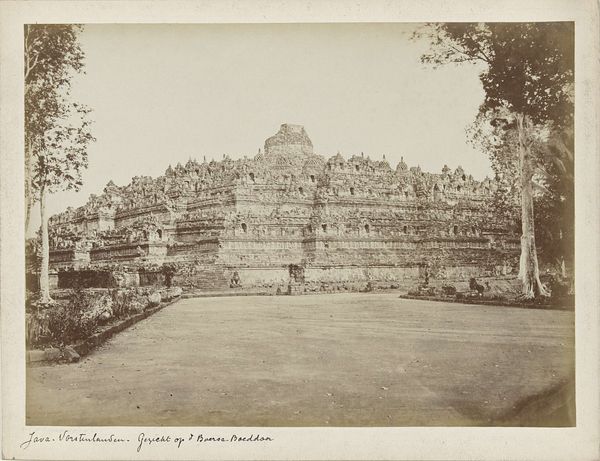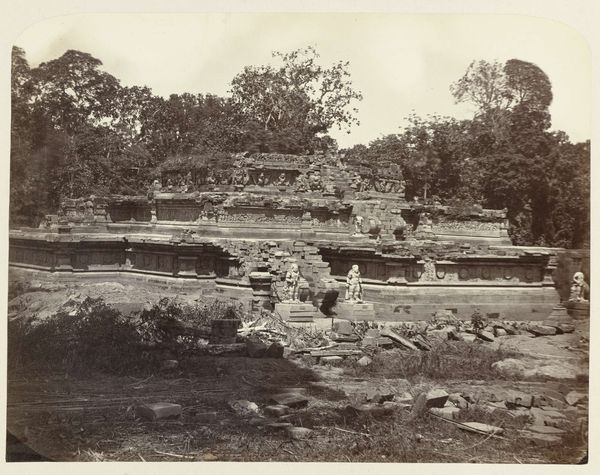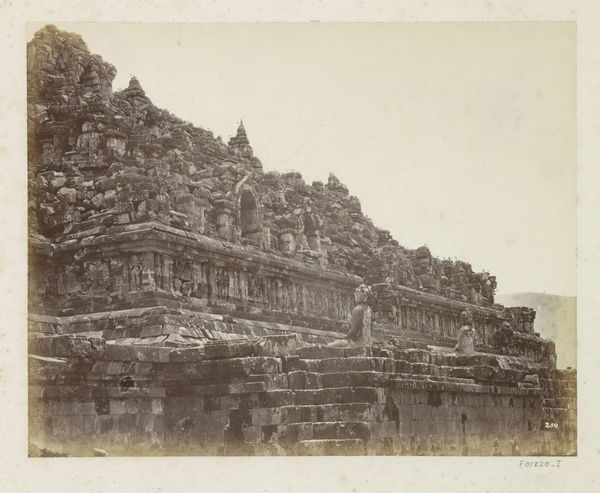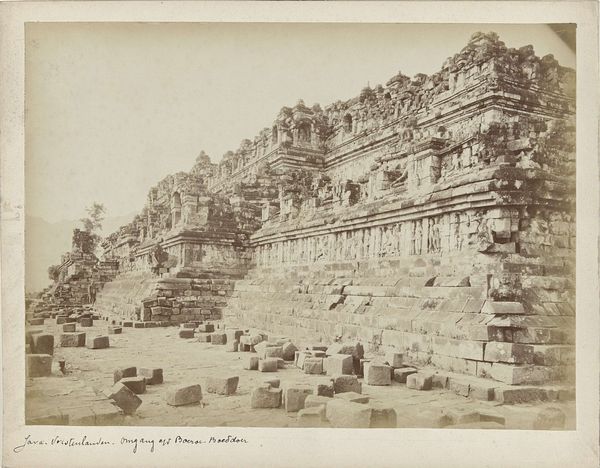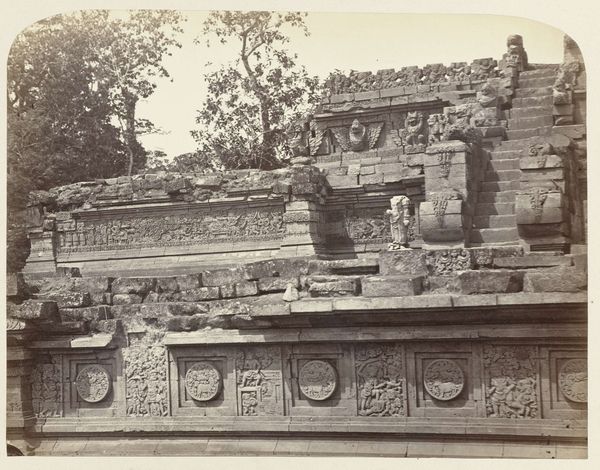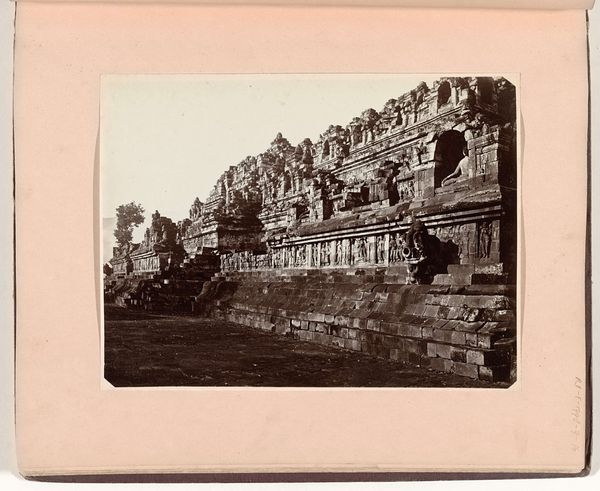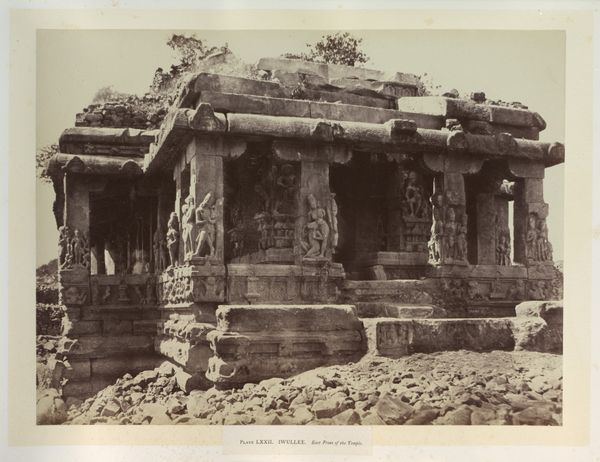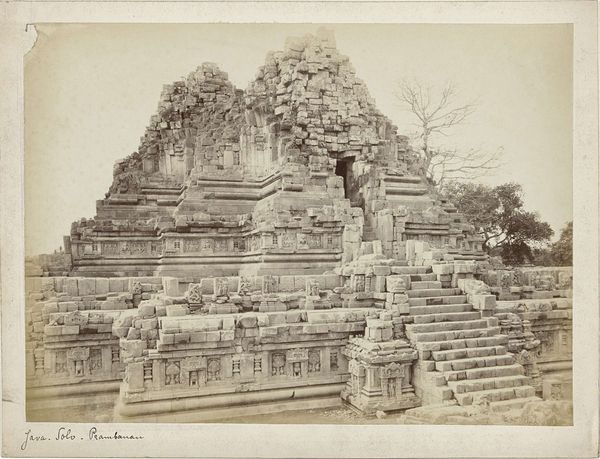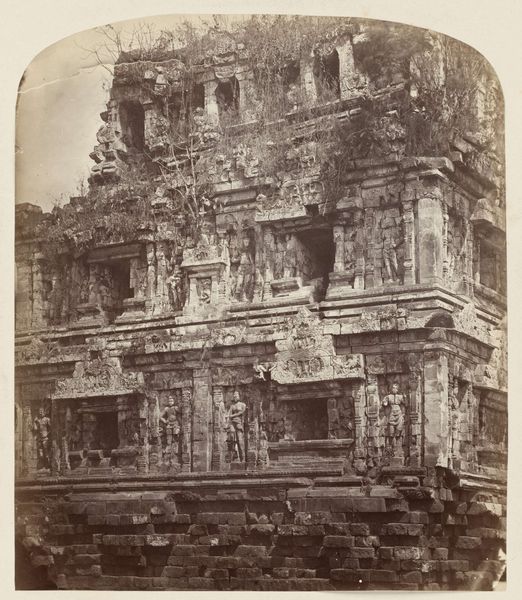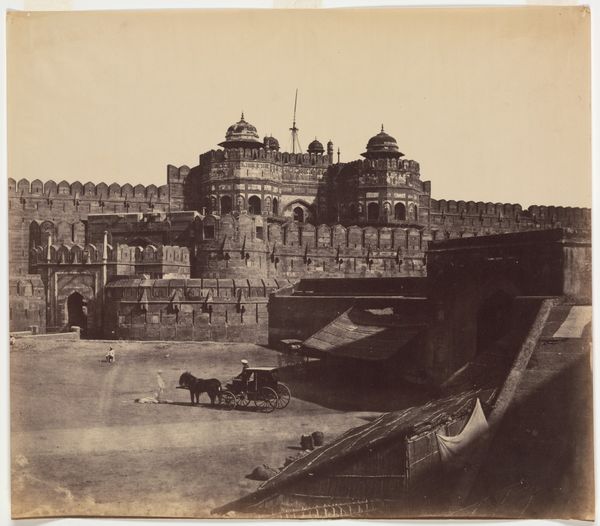
Zicht op de noordzijde van de Borobudur met een aantal van de reliëfs en Boeddha nissen Possibly 1873 - 1879
0:00
0:00
photography, gelatin-silver-print
#
asian-art
#
landscape
#
photography
#
orientalism
#
gelatin-silver-print
#
19th century
Dimensions: height 300 mm, width 400 mm
Copyright: Rijks Museum: Open Domain
Curator: Here we have Isidore Kinsbergen’s photograph, likely taken between 1873 and 1879. The piece, a gelatin silver print, is titled “View of the North Side of Borobudur with some of the Reliefs and Buddha Niches." Editor: Wow, there's a profound sense of scale, and also this quiet intensity. You can almost feel the weight of all those carved reliefs and the stories they hold in every inch. The light just seems to caress the stonework, bringing out every little detail. Curator: Indeed. Kinsbergen was instrumental in documenting the Borobudur during the colonial period. His images played a role in shaping Western perceptions of Southeast Asian art and culture within an orientalist frame. Editor: Absolutely, it’s a document of labor as much as it is a work of art. I'm thinking about all the hands that carved each stone, and the communities involved in quarrying, transporting, and placing them. It speaks to the complex systems required to realize such an enormous architectural undertaking. The scale also communicates the relationship between humans and monumental things! Curator: And what's interesting is how photographs like this, in their distribution through colonial networks, also played a role in reinforcing colonial power dynamics by presenting this vision of a grand, ancient, yet "exotic" culture to a European audience. They contributed to a visual archive that shaped how the West understood—or perhaps misunderstood—the East. Editor: I think of how the chemical processes involved in creating a gelatin silver print interact with both time and the organic materials around them to produce slightly different effects. This print stands in the intersection between photography, labor, social dynamics and material, making it an intriguing piece to think about! Curator: It prompts us to consider the photograph not just as a neutral representation but as an active agent in shaping perceptions and reinforcing power structures. It is essential to consider the political and cultural baggage these images carried and continue to carry. Editor: Looking closely, thinking about what materials are presented in relation to each other, can shift my perception of something and make the photograph’s function visible. Thank you for pointing out that layer of political context!
Comments
No comments
Be the first to comment and join the conversation on the ultimate creative platform.
